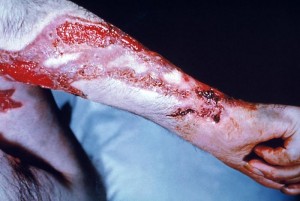Health officials in Australia’s Northern Territory are reporting an outbreak of a fungal infection that hasn’t been seen before. The fungal infection is Sporotrichosis and at least 10 people have been infected with it since last year.

In an interview with ABC Rural today, Dr. Anna Ralph from the Territory Centre of Disease Control says all the cases seen have been in people handling hay. Dr. Ralph also notes that it is somewhat surprising that cases haven’t been seen before since it is an infection that occurs globally.
When asked if the area will now always have Sporothrix, Ralph said, “It tends to occur in outbreaks that sorta come along and peter out. We really don’t know. We can’t really predict if it will just be seen this season and be the end of it, or will it be something we need to be alert to for the next few seasons. Probably it will just “burn out”.”
Sporothrix schenckii is a fungus that grows well in soil and other decaying vegetation. It is particularly associated with sphagnum moss (peat), hay, lumber and rose bushes, hence the nickname, “rose-gardener’s disease”.
It usually enters the skin through minor trauma like a thorn or splinter. It can less commonly be inhaled and cause pulmonary infection. Typically lesions will be found on the hands or forearms. The appearance of a small, painless red bump may present itself after several weeks. It may look like an insect bite or a boil and eventually ulcerates. It can spread via the lymph nodes up the arm or leg.
Disseminated infections of the disease may be seen (lungs or central nervous system) but that is usually restricted to those with an impaired immune system. In addition, alcoholics seem particularly prone to this infection.
The infection will not resolve itself and you will need to see your physician for appropriate treatment. Diagnosis is based on submitting a sample, usually a biopsy or swab, to a laboratory for a fungal culture. There are several anti-fungal medications available for treatment.

How can you prevent this disease? The use of gloves and wearing long sleeves will help prevent abrasions. Particular care should be taken if you have a compromised immune system, not only for Sporothrix, but several other infectious agents that could be present in your garden.


21 thoughts on “Australia: Sporotrichosis outbreak reported in the Northern Territory”